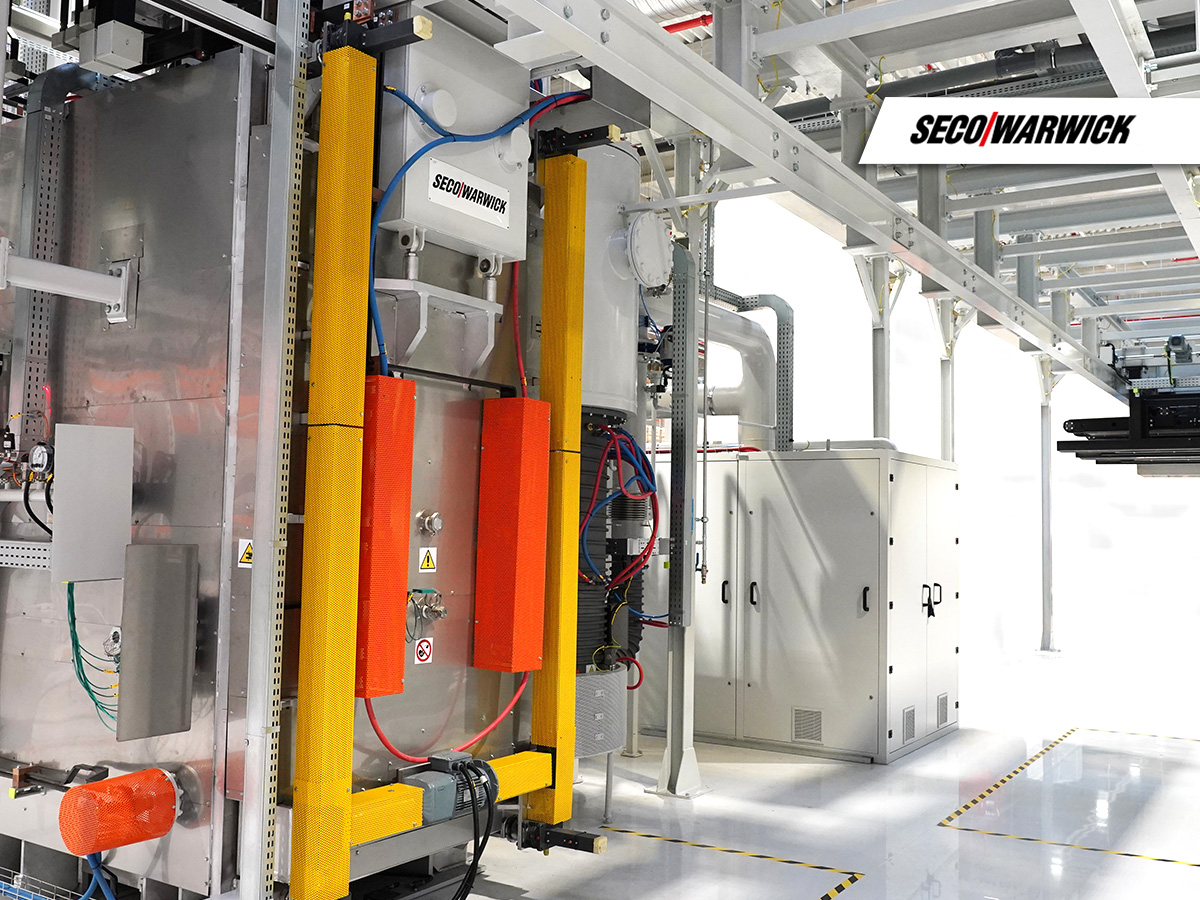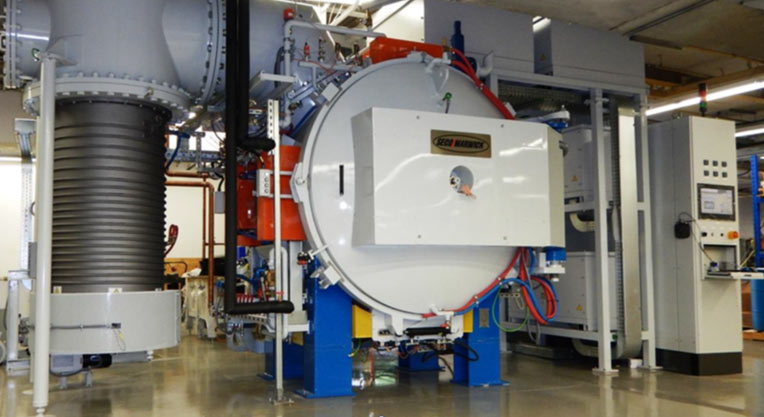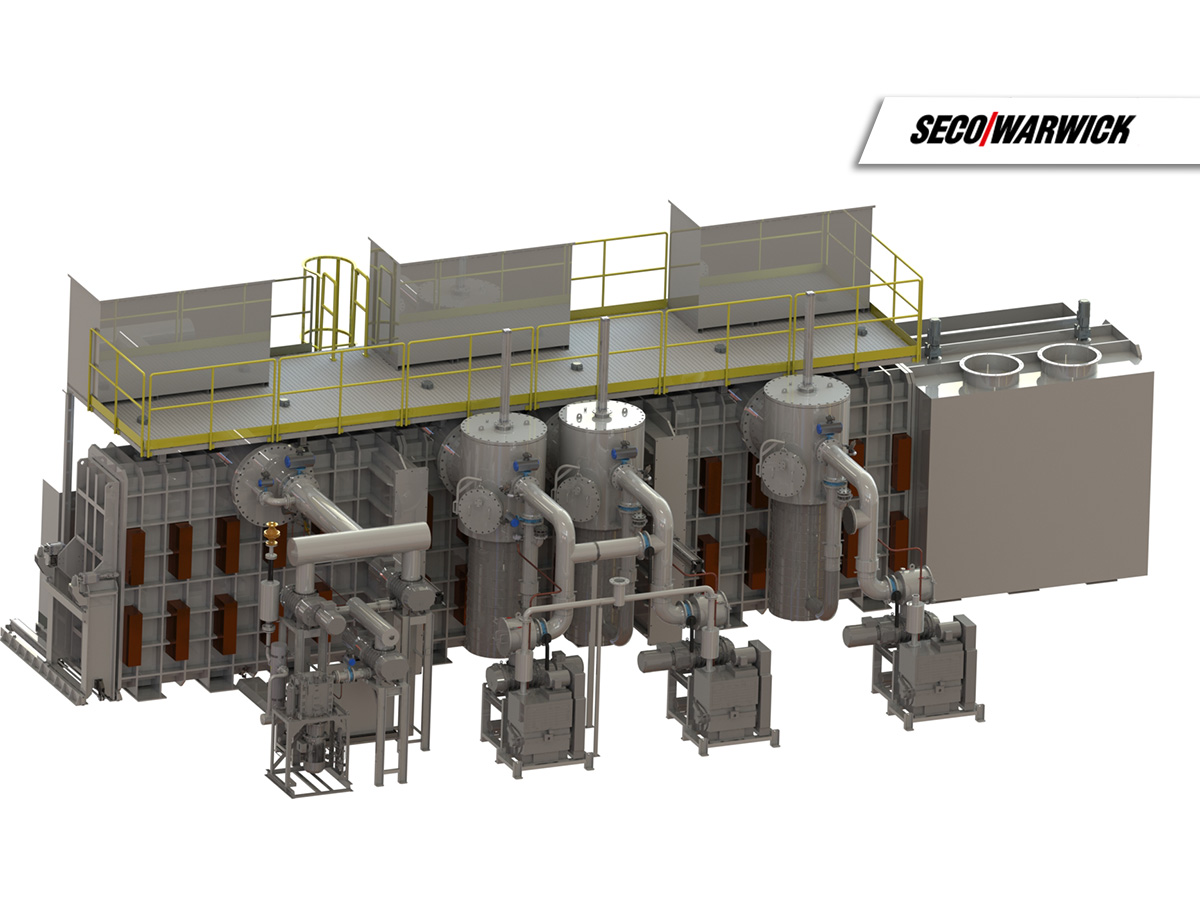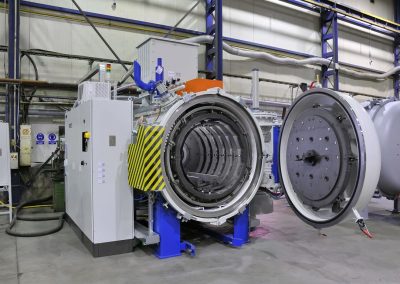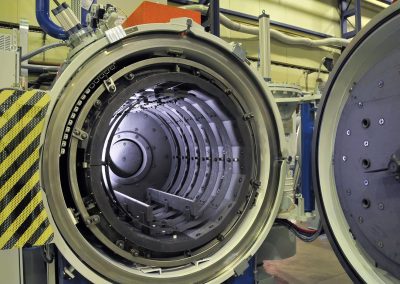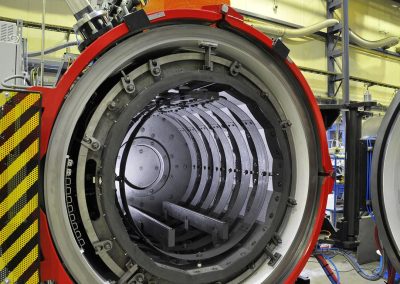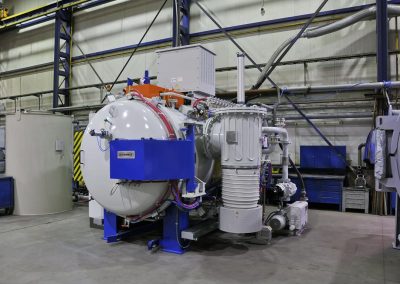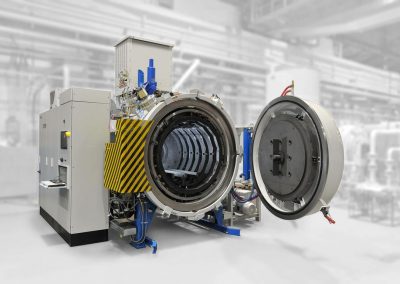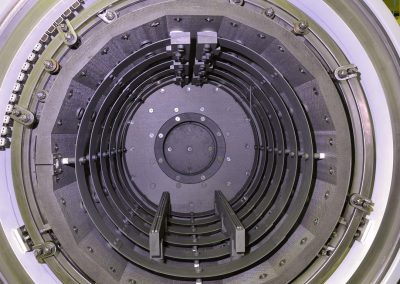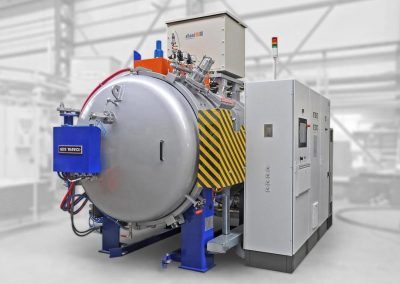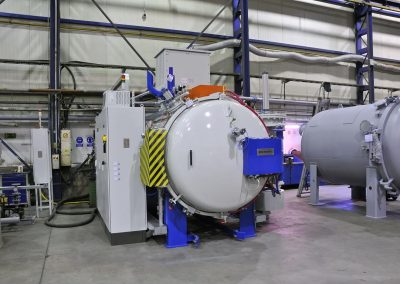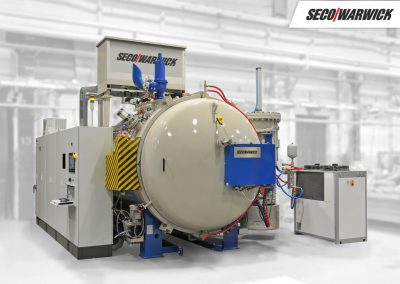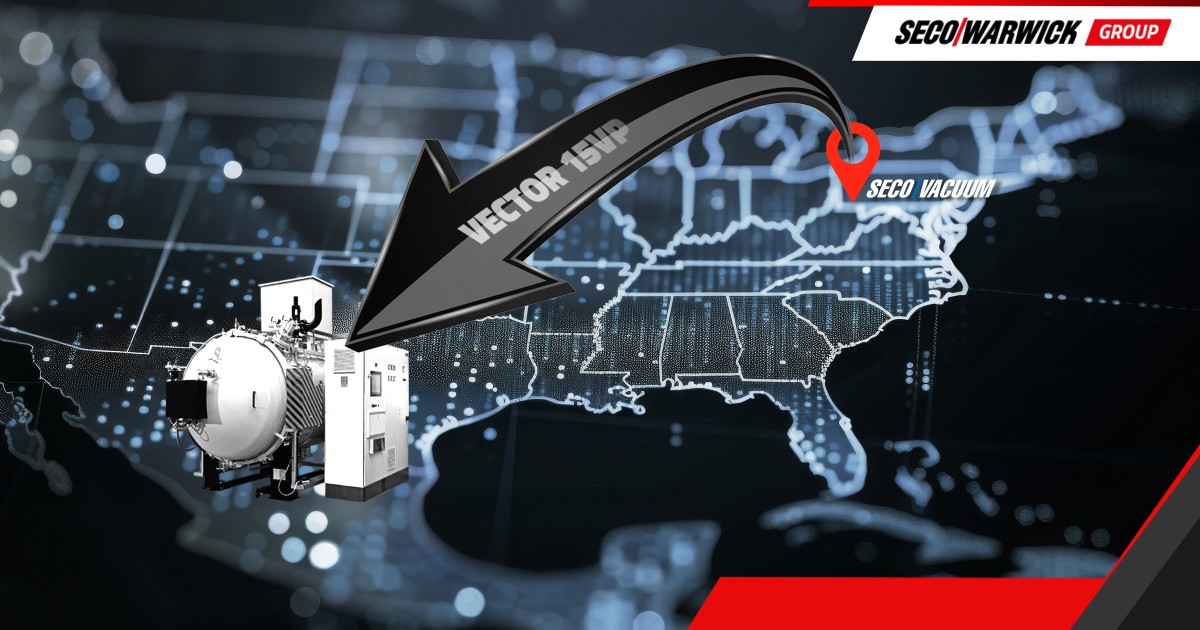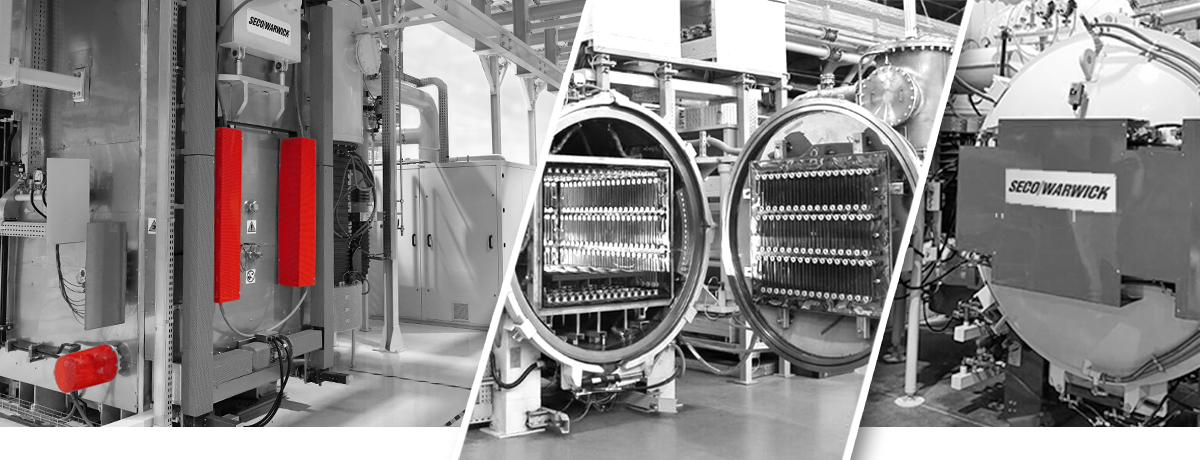
VAB furnace line
Furnaces for vacuum aluminum brazing
Known for years, VAB technology is gaining in importance due to its environmental friendliness and process cleanliness. VAB furnaces provide reliable and repeatable brazing results in a wide range of furnaces, tailored to each customer’s expectations and requirements.
VAB furnace technology (fluxless brazing) is an ideal solution for vacuum aluminum brazing. During this process, the system eliminates the requirement for flux, which is not required to create joints with an alloy addition in brazed details, or in solid form in the furnace. The key element of vacuum aluminum brazing is the use of magnesium as an alloy addition in brazed details, or as a solid form in the furnace. Magnesium is essential in the process as it can bind oxygen and water vapor upon evaporation, thus improving the vacuum purity. The process also reduces the aluminum oxide on the soldered part surface, allowing the system to wet the details evenly and quickly.
Vacuum aluminum brazing has a very narrow range of acceptable process temperatures. As a rule of thumb, the filler metal must liquefy before the base metal reaches solidus temperature. In most cases, this temperature difference is very small (5-10 ºC), so the process temperature profile and the furnace’s ability to achieve it is critical.
VAB technology is ideal for complex shapes, internal and multi-surface welds, different aluminum grades and their thicknesses.
/ Oxygen-free brazing eliminates the cost of flux and its application
/ Parts washing is limited to pre-process washing
/ After the process, the parts are clean with a dull gray finish
/ Potential corrosion spots are eliminated, thanks to flux elimination
/ Environmentally friendly technology
/ Repeatable results due to high temperature uniformity and high vacuum
/ No residue or corrosion due to flux contamination
/ Produces a high quality product
/ Brazing
/ Heating, ventilation, air conditioning and refrigeration (HVAC&R)
/ Automotive
/ Aviation
/ Railway
/ Electronics and home appliances
/ Manufacturers of power generators and power plants
All aluminum alloys which can be flux-brazed can be vacuum brazed. In addition, some magnesium-containing aluminum alloys (e.g. 5xxx series) which are not easily flux-brazed can be vacuum brazed.
Using the correct techniques, the alloys of the lxxx, 3xxx, 5xxx, 6xxx and 7xxx series can be vacuum brazed.
VAB technology products can be divided into 3 types:
Batch VAB with a suspended load and a dedicated transport system
Batch VAB with space dedicated to the aerospace industry and commercial heat treatment, loaded on trays
VAB multi-chamber, – continuous line
An additional product which can be used for VAB technology is a vacuum furnace for deoiling parts after the stamping process. It can work with any of the three VAB products’ types. It is used to remove oil from parts before they are loaded into the furnace. An alcohol washer can be used instead, and the vacuum oil separator speeds up the process in the main VAB furnace. Parts in the oil separator are heated to 370-400ºC and transferred to the main VAB furnace, thanks to which the parts in the VAB furnace are heated from 400ºC to 600ºC.
Another additional product of the VAB line can be an air cooling chamber. After brazing at 600ºC, the parts are cooled below 500ºC and, in order to release the brazing chamber, they are transferred to another cooling chamber, where they are cooled by air exchangers. Aluminum at this temperature no longer oxidizes and it is safe for quality and surface.
/ vacuum as a protective and technological atmosphere eliminates the need to use harmful process gases and their emission to the environment,
/ no CO₂ emissions, no use of fossil fuels,
/ gas utilization for cooling (nitrogen, argon), captured and returned to the air, neutral for the environment,
/ reinforced thermal insulation saves electricity (approx. 20%),
/ high energy efficiency of used electrical components (IE3 class motors, inverter control, etc.),
/ application of systems and algorithms limiting energy and technological factor consumption (pumping, heating and cooling systems),
/ no harmful substance emissions,
/ reduction of hardening deformations and downstream machining costs,
/ elimination of part washing after heat treatment.
